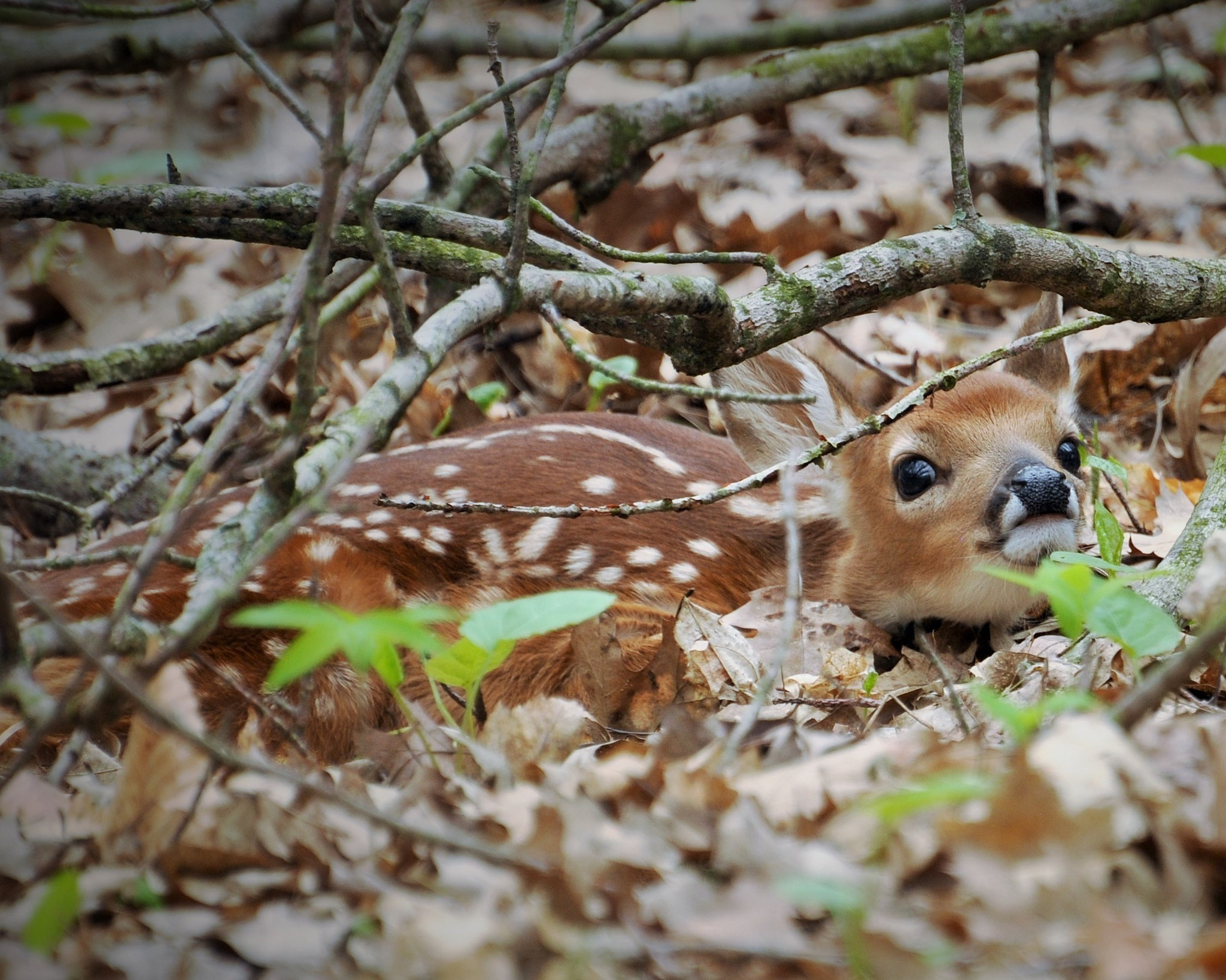Contact: Amanda Kamps, DNR Wildlife Health Conservation Specialist
Amanda.Kamps@wisconsin.gov or 608-712-5280
Keep Wildlife Wild
Help Protect Wildlife Health In Wisconsin
 Newborn fawns naturally spend most of the day on their own, quietly waiting for their mothers to return from feeding.
Photo credit: Reggie Gauger
Newborn fawns naturally spend most of the day on their own, quietly waiting for their mothers to return from feeding.
Photo credit: Reggie Gauger
MADISON, Wis. – The Wisconsin Department of Natural Resources (DNR) reminds the public to help keep wildlife wild this spring by keeping a safe distance from baby wild animals.
Now is the peak season for fawns to be born, so many Wisconsinites may come across newborn white-tailed deer while out walking or even in their yards. If you spot a fawn, remember: “If you care, leave them there,” because a fawn’s best chance of survival is in the wild with its mother.
Once fawns are a few weeks old, they are strong enough to keep up with their mothers and escape from danger, but until then, they lie still in the brush or grass and keep quiet while their mother is off foraging.
“Mother deer leave their babies alone as a survival strategy. If you come across a fawn lying still and quiet and don’t see mom around, that’s perfectly natural,” said Amanda Kamps, DNR Wildlife Health Conservation Specialist. “That fawn is doing exactly what it’s supposed to do to keep safe. Even if you don’t see the mother doe, she’s likely nearby.”
Fawns are born with a spotted coat and minimal scent that help them stay safe. Mom knows that being around her fawns will draw attention, so she leaves them alone and checks on them periodically throughout the day.
Knowing what to do before you find a wild baby animal can make all the difference in the moment to protect it. The DNR has various resources to help determine when baby wild animals need help and when it’s best to leave them in their natural environment.
What To Do If You Find A Fawn
- Unaccompanied fawns have rarely been abandoned. If you find a fawn lying quietly by itself, leave it alone unless it is visibly sick or injured.
- Do not bring other people or pets to look at the fawn. The mother will not return while people or other animals are around. Giving the fawn and its mother space is the best thing you can do to support their natural behavior.
- If a fawn is in an unsafe location, such as near a roadway, it’s okay to move the fawn back from the road several yards. Be sure to wear gloves and a facemask to protect the health of the fawn and consider your safety when walking near a road. The mother will find the fawn. Although you should avoid touching the fawn unless necessary, it’s a myth that the mother will reject the fawn if it has a human scent on it.
- If a fawn appears visibly sick or injured, call the DNR or a licensed wildlife rehabilitator for further guidance. Visit the DNR website to find a wildlife rehabilitator near you.
Taking possession of any wild animal, including a fawn, is illegal. Fawns have highly specialized diets and socialization needs. Without their mothers or expert wildlife rehabilitation care, they cannot survive in the wild.

